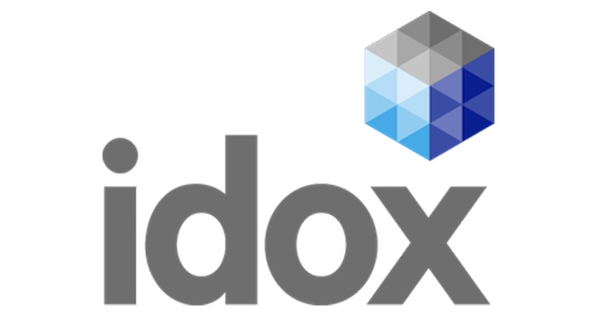Where next for local government digital services?
It’s a truism to say that every organisation is on a digital transformation journey. But for councils the challenges posed by COVID-19 have enforced rapid change on a scale never envisaged as possible. While online channel shift was imposed and entire organisations switched to working from home, the struggle was on to continue to deliver public services during a time of national emergency.
Over recent years, tight budgets – and with it, the call to work smarter, transform quicker – have combined with changing citizen expectations to drive digital change. However, the overnight shift experienced in 2020 has left many organisations struggling to maintain basic levels of services. As one commentator pointed out, local authorities have found themselves on the frontline in responding to COVID-19:
Now, as thoughts turn to supporting the recovery process, it’s time to consider which changes are here to stay. Will local government bounce back and embed the progress made on reconfiguring digital services? Will collaboration and greater agility become the norm in order to minimise wastage and focus results on improving outcomes for local communities?
Or will 2020 come to be seen as a missed opportunity? In this paper, we explore some of the forces shaping local government and consider the areas of greatest potential.
“Councils are coordinating action at the local level, reacting to events, all the while maintaining core services like bin collection, street cleaning, and child protection. The pressure on councils is immense. Despite their financial pressures, local governments are stepping up to the challenge. Several have set up volunteer hubs to channel social action. Greater Manchester’s combined authority has set up a website where residents can volunteer in each of the ten councils covered by the authority through local charities. This ranges from helping get shopping and do laundry for vulnerable people to making phone calls and doing driving errands.”
Current drivers for change
Four years ago, the innovation foundation Nesta set out a vision of local government in 2025. The report focused on how digital technologies could help councils save money, enable economic growth and deliver better outcomes for residents and communities.
We’re still five years off that benchmark point, and the extent to which the vision of councils as lean, agile and data-driven has been achieved is debatable. Before COVID-19, Audit Scotland were investigating the progress that local authorities are making in becoming ‘digital councils’. The Local Government Association has also highlighted in their Digital Channel Shift Programme Evaluation that successful digital transformation is not a given, but depends on culture and processes, not just investment in technology.
The Local Digital Fund, originally set up by the Ministry of Housing, Communities and Local Government in September 2018, offers councils up to £100,000 for collaborative projects that use digital technologies to improve local services. The latest round was a COVID-19 Challenge which specifically offered support for data and digital projects to help local authorities in England with their COVID-19 recovery and renewal efforts.
Successful bids provide an indication of where councils see the greatest potential for innovative digital services to respond to the unique challenges created by the pandemic. These include the use of data and insights to model demand for public services, as well as targetting support at the most vulnerable. Another key area of interest is creating new methods for consultation and community engagement, for example in the area of planning. Within councils, data and technology can be used to help design future working patterns to maximise productivity and wellbeing, or manage facilities and workplaces in ways that are ‘COVID-secure’.
More generally, however, wider trends were already driving change in local government. And the experiences of the last few months may lead to reprioritisation of digital investment by councils and other public sector organisations in these areas.
An ecosystems approach
Technology within the local government sector has the potential to directly improve the life of citizens. But too often, progress continues to be constrained by a narrow view of transformation that focuses on delivering one-off projects or automating basic transactions. People shouldn’t have to understand a council’s corporate structure in order to access the services or support that they need. By taking a more holistic and connected approach and using data, digital and user-centric design approaches it is possible that councils can make their services more efficient, effective and transparent.
Shifting from transactions to end-to-end services
1. Solve whole problems for users
2. Share knowledge and research, and use data to inform decision making
3. Take a broader approach to accessibility and inclusion
4. Provide consistency in the customer experience, in terms of processes, enforcement, and
quality of services
5. Provide safe and secure systems that end users and stakeholders can trust
Many newer technologies have not currently reached a critical mass, but they have the potential to transform the sector. This ecosystem of tools and approaches is still developing. Where can they be seen today?
The big trends that the public sector was already embracing
• Data analytics: Understanding population needs and trends at local level is crucial for designing and delivering public services.
• Alternative data sources: Social media, crowdsourced data, APIs (application programming interfaces) and sensors all offer wider and faster access to data for decision making. Challenging targets on pollution and waste management for example, require faster access to data, often in real-time.
• Artificial intelligence: Combining satellite imagery with machine learning offers new place-based insights, while online service chatbots provide a communication channel for citizens without requiring additional resource. A recent national survey showed that nearly a quarter of councils in the UK already have an AI strategy in place.
• Blockchain: The technology is being adopted in countries around the world to deal with processes such as land and property registration, and building or environmental health inspections and licensing. It’s also being used within education to validate student records and learner credits.
• Drones: Unmanned Aerial Vehicles are being used as a low cost and adaptable data-gathering tool for planners, for example in site inspection or aerial mapping.
Evolving digital services
Chatbots and AI: Machine learning and the use of automated chatbots to deal with common customer service queries offers large potential cost savings, freeing up staff time to deal with more complex queries.
Live chat: Interactive online chat is another avenue that the local government is looking at to improve accessibility. Research for the Scottish Government, for example, highlighted interest amongst planning authorities for using chat services to improve perceived customer service.
Voice-enabled services: For the last few years, the focus has been on delivering mobile-first design, but within five years, the prediction is that voice search will have gone mainstream. Already 1 in 10 households in the UK have a smart speaker. Local government will need to consider how to support and optimise its digital channels for voice-assistance.
Personalisation: Digital apps are already allowing people to manage personalised budgets within health and social care. Voter registration and elections is another area where personalised apps are being used to increase turnout and engagement.
Mapping and tracking: Effective asset management can allow public sector organisations to make efficient use of existing assets, while identifying areas that need investment.
Virtual/Augmented Reality: Beginning to be used worldwide as a consultation and engagement tool for major development projects, and as a training tool within health services. It has been used in Northern Ireland in 2019 to explain to people with learning disabilities what to do when they go to vote.
Mainstreaming digital identities
If the required efficiencies are going to be achieved from digital services, then they need to be able to scale. A key part of that is interoperability – making it as easy as possible for customers to access services, and for service providers to verify key information in a secure way.
The government recognised the importance of a digital identity strategy in its September 2020 announcement of plans to update existing laws and provide new guiding principles for policy development. The Digital Identity Strategy Board is leading work to remove barriers to proving digital identities securely online while ensuring privacy is safeguarded.
The use of digital identities has wide potential within public services, including within the area of elections. Idox has already supported local government with implementing reform of the annual canvass system, which checks who is registered on the electoral roll. And TechUK has identified voter registration, polling and e-voting as a key area where digital identities could provide benefits both for citizens and public sector organisations.
Connected citizens and connected services
Councils recognise the importance of supporting the delivery of direct services and shaping a better citizen experience. However, people have high expectations when it comes to digital services, based on their experience of using retail-based B2C (business-to-consumer) online services. The challenge for local authorities is providing the seamless experience which consumers are used to. Many local councils still have disparate legacy systems and technologies, disjointed workflows and costly overheads.
One solution for local councils is conducting user research at the earliest possible stage. Design thinking is becoming a necessary skill within the public sector.
It needs to be recognised, however, that digital exclusion remains a barrier, and this has been brought into stark focus during the pandemic. Many children and young people lack the digital devices they need to access learning remotely. For employees trying to work from home, broadband and connectivity has been an issue. And for many council residents, accessing services digitally rather than face-to-face can be an intimidating process.
Recent research by Ofcom has suggested that as many as 1 in 10 UK adults are digitally excluded in 2020. While those aged 70+ are significantly more likely to be face exclusion (approximately 40% are in this category), other characteristics which increase the risk include livning alone, having a disability or being financially vulnerable. As access to services such as GP consultations or applying for benefits has moved away from face-to-face settings, the duty of councils to prevent discrimination in their service delivery remains.
Cornwall Council – investigating travel behaviour
Cornwall Council wanted Idox to look at how digital services could encourage existing car drivers to use public transport sustainably. There was particular interest in engaging with 18-25-year olds. Cornwall is a county where over 78% of all journeys are taken by car, with only 1% of journeys taken by bus and 3% by train. Following Government Digital Services guidelines, Idox embarked on a series of activities to understand how public transport is perceived by Cornish citizens.
The user research explored: barriers discouraging them from using public transport; online/digital tools they may use already to plan journeys; and their experience of public transport. The user insights are now being taken forward by the council in their service planning.
Normalising the cloud
Cloud adoption has been an important part of government transformation. The UK Government introduced a ‘Cloud First’ policy in 2013 for all technology decisions. Moving to the cloud has helped many public bodies achieve significant efficiencies over their previous hosting arrangements. Uptake within local government has been slower, however. This is partly because of the many, complex systems local authorities need to migrate and integrate, but there is also the challenge of re-evaluating and enhancing existing working practices with limited resources.
Even so, responses to the pandemic have demonstrated that a cloud approach offers agility, resilience and business continuity. In addition, the knowledge that crucial back office systems, such as server management and disaster recovery systems are being managed remotely creates a sound foundation on which to build future digital channel shift initiatives.
In the long term, we will see more consolidation of local authorities through local government reorganisation initiatives, such as the creation of new unitary or devolution agendas. Having cloud- based technology will not only bring all the standard infrastructure benefits described above, but will also address the IT challenge of the potentially massive geographical spread of these authorities.
In addition, a cloud approach also creates simpler integration opportunities for inter-agency data sharing. For example, Idox and HM Land Registry (HMLR) have been working to integrate HMLR’s national Digital Register and Idox’s market-leading Local Land Charge solution for the benefit of councils across England. Using the existing Idox Digital Platform, the solution enables the ongoing daily update of Local Land Charge information from each local authority directly into the HMLR portal, automating and standardising data in one accessible place.
New ways of working
The shifts in how public services have been delivered during 2020 reflect a wider need for more agile ways of working to become the norm. Local government staff working in the field – whether that’s a planning official making a site visit or a social worker checking on a vulnerable family – need to be able to securely access and update case information. New ways of working also mean delivering service enhancements within tight funding constraints.
Multi-agency teams need to share information across multiple professional settings and often with service users or their families as well. For example, Idox provides solutions to help local authorities coordinate assessment, planning and reviews of education, health and care (EHC) plans for children and young people aged up to 25 who need more support than is available through special educational needs support.
If local government is going to fully realise the potential of digital services, however, then it needs to take seriously the question of skills within the current workforce.
The publication in early August 2020 of the government’s consultation on reforming the planning system in England identified digital services as an area which needs improvement:
“Reform should be accompanied by a significant enhancement in digital and geospatial capability and capacity across the planning sector to support high-quality new digital Local Plans and digitally enabled decision- making.”
When looking at how other countries have implemented Plantech (technology designed for, or used in the town planning process), it’s clear, however, that there has been a significant investment in data literacy. In Singapore, for example, the government’s Digital Planning Lab runs a data analytics immersion programme twice a year to train cohorts of government employees on how data can be used in their work.
Many public services require staff and leaders to understand the wide range of data available and how this assists decision making. This may be within schools, health and social services, transport management or environmental services, for example. Data literacy means understanding:
- what data represents and how to translate insights into actions for improvement;
- questions around the reliability of data and its limitations;
- data narratives at individual level and how this is used to improve outcomes;
- the infrastructure available to support effective data use and how to build capacity at all levels to use data effectively.
Thriving in the new environment
Local government is entering a new phase of digital transformation and many organisations have made huge changes in the way they deliver services as a result of the pressures of the pandemic.
A focus on simplifying complex processes and enabling the efficient delivery of services will lay the foundations for further progress as we move into recovery.
COVID-19 has accelerated change which was already in progress. It has highlighted the risks that stem from disconnected and disjointed processes and workflows. It has also shone a spotlight on the real value that can result from enabling end-to-end integration and the automation of processes. We’ve seen councils engage with citizens via new online channels, councils who have used digital to transform core processes, and teams working daily to tailor technology to enable collaboration and personalisation. We know, because we’re helping them to do more.
Transformation is about being smarter in where to pinpoint resource and investment, as much as it is about being smarter in terms of service delivery itself.
Ultimately, digital evolution is not an end in itself but a process. And the first step is to find a partner committed to supporting local government now and in the future.




